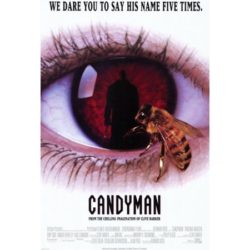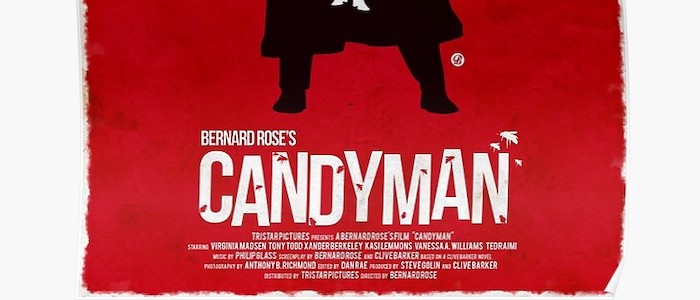 Title: Candyman (1992)
Title: Candyman (1992)
Director: Bernard Rose
Runtime: 99 minutes
“The pain, I can assure you, will be exquisite. As for our deaths, there is nothing to fear. Our names will be written on a thousand walls. Our crimes told and retold by our faithful believers. We shall die together in front of their very eyes and give them something to be haunted by. Come with me and be immortal.”
—
I remember watching Candyman for the first time years ago, and being a bit letdown. It wasn’t what I expected, and didn’t strike a chord with me like I’d hoped. There was always something about the film that stuck with me, though. Specifically, the graffiti artwork on the walls of the apartment complex in the projects always ran through my head whenever I thought of the film. On my second viewing, not much changed; I still found the film fine, but nothing more. It took me three viewings of Candyman to really appreciate why this movie has a cult following.
Virginia Madsen plays Helen Lyle, a graduate student at the University of Illinois – Chicago that is writing a thesis on local urban legends. She stumbles upon the story of Candyman, and decides that this is her ticket to an interesting thesis. She dares to say Candyman’s name five times into a mirror, and this urban legend that she doesn’t believe in becomes her worst nightmare realized.
Candyman has a pretty basic premise, but writer/director Bernard Rose weaves it all together to give the characters a lot more depth than the brief synopsis might lead you to believe (it should also be noted that this film is based on a story called The Forbidden, written by Clive Barker). The main characters are a likable group, with Xander Berkeley playing Helen’s husband, Trevor, and Kasi Lemmons playing her best friend, Bernadette. The three work really well together, and I found myself invested in their plight. Candyman, played wonderfully by Tony Todd, plays with Helen’s mind, and sets her up to look insane. The degradation of Helen’s character is excellent, and Madsen’s portrayal of this descent is fantastic.
Something I noticed this time around – and I’m shocked it took me this long to pick up on it – is Philip Glass’ masterful score. His music elevates every scene, and is one of the best aspects of the entire film. I absolutely loved seeing Chicago in the early 1990s. The awesome, birds eye cinematography over the city as Helen drives around is really fun to see, and Glass’ score helps makes these scenes stand out. Helen and Bernadette first pulling into Cabrini Greens is nothing short of epic.
The aforementioned graffiti is a character in itself in Candyman. The shot of Helen crawling through the wall, through the mouth of a graffiti drawing of Candyman, is an image that I can’t get out of my head. It’s just so well done. I don’t know why it took me multiple viewings to appreciate Candyman as much as it deserves, but I’m glad I’m finally there. This film is great, and is a lot better than I remembered.


Branden has been a film fan since he was young, roaming the halls of Blockbuster Video, trying to find the grossest, scariest looking VHS covers to rent and watch alone in the basement. It wasn’t until recently, though, that Branden started seeking out the classics of cinema, and began to develop his true passion for the art form. Branden approaches each film with the unique perspective of having studied the art from the inside, having both a bachelor’s and master’s degree in acting. He has been a film critic since 2010, and has previously written for Inside Pulse Movies, We Love Cult, and Diehard Gamefan. His biggest achievement as a film critic, to date, has been founding Cinefessions and turning it from a personal blog to a true film website, housing hundreds of film and television reviews, and dozens of podcasts.


